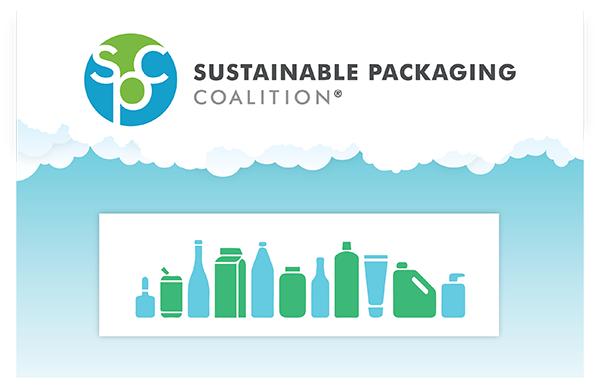 One of the SPC’s core tenets in its approach to making packaging more sustainable is operating with material neutrality. At face value, that means we don’t engage in the paper versus plastic debate. The deeper meaning of our material neutrality, though, is that we never pass judgement on the inherent sustainability of any particular packaging material — good or bad — no matter what type of work we’re engaged in. The SPC is not in the business of advocating the use of one material nor will it ever advise industry to blacklist any particular material. On one hand, material neutrality is a necessary measure to bring diverse stakeholders together and foster an atmosphere of collaboration over competition. On the other hand, material neutrality has become a natural consequence of our objective viewpoint on packaging sustainability. Put simply, we couldn’t pick winners and losers even if we wanted to.
One of the SPC’s core tenets in its approach to making packaging more sustainable is operating with material neutrality. At face value, that means we don’t engage in the paper versus plastic debate. The deeper meaning of our material neutrality, though, is that we never pass judgement on the inherent sustainability of any particular packaging material — good or bad — no matter what type of work we’re engaged in. The SPC is not in the business of advocating the use of one material nor will it ever advise industry to blacklist any particular material. On one hand, material neutrality is a necessary measure to bring diverse stakeholders together and foster an atmosphere of collaboration over competition. On the other hand, material neutrality has become a natural consequence of our objective viewpoint on packaging sustainability. Put simply, we couldn’t pick winners and losers even if we wanted to.
Take, for example, the paper versus plastic debate, which has no end in sight for good reason: they both have compelling sustainability stories. Paper is a bio-based material often made with renewable energy and tends to fare well in recycling and composting operations. Plastic is also recyclable, and will often win in a heads-up comparison of many environmental impact indicators since it is an extremely efficient use of natural resources thanks to the extraordinary performance characteristics possessed by an efficiently small amount of material. Of course, on the other side of the coin, they both certainly have their share of challenges. Paper can be water-intensive. Plastic can be fossil fuel-intensive. If we were to pick a winner, it wouldn’t really be a question of one material versus another — it would be a question of one environmental impact versus another, or one benefit versus another. Until there is scientific consensus that, say, water consumption is more important than fossil fuel consumption, or greenhouse gas emissions are more important than litter issues, there will be more meaningful debates elsewhere. A holistic view of sustainability results in an agnostic view of materials.
Material neutrality, however, should not be mistaken for design neutrality. While it’s impossible to pass judgement on the inherent sustainability potential of materials, there are often clear winners and losers when it comes to design. When we discuss life cycle assessments, we often say “materials don’t have life cycle impacts, but designs do”, meaning that if we put a material in the context of a package design, we can identify its strengths and weaknesses compared to alternative designs. Those comparisons may also be inconclusive, since trade-offs abound and the victorious design will inevitably perform worse in some type of sustainability indicator, but there are plenty of instances where the sustainability community would find a nearly unanimous opinion of the preferability of certain designs. For instance, nobody would suggest that a cereal box made from aluminum is the most sustainable design. But that doesn’t mean that aluminum is an unsustainable material. It might be great for providing an oxygen and light barrier when applied to a thin film, or housing an aerosol product, or as a beverage container, but it’s the application of design that provides the context for evaluating its sustainability story.
On a final note, many of the material debates center on end-of-life and recovery issues, and there is an interesting dynamic there keeping those debates from ever being productive: because recovery systems change. While industry strives to use packaging materials (and designs) that align with the current recovery system, the recovery system is changing to align with emerging packaging materials. Everybody likely agrees that some materials have a better end-of-life story than others, but we also must recognize that what’s true today will assuredly be changed in five years, ten years, fifty years. The packaging community and recovery community have been meeting in the middle for years to encourage more thoughtful package designs and create more robust recovery technologies, and it’s that collaboration that creates promise for more sustainable packaging. The way we think about the sustainability of materials is ever evolving, and material neutrality helps us avoid the short-sighted debates and focus on the meaningful work of advocating good design and informing decision makers on trade-offs, opportunities, and challenges.
Categories
Material neutrality, defined


